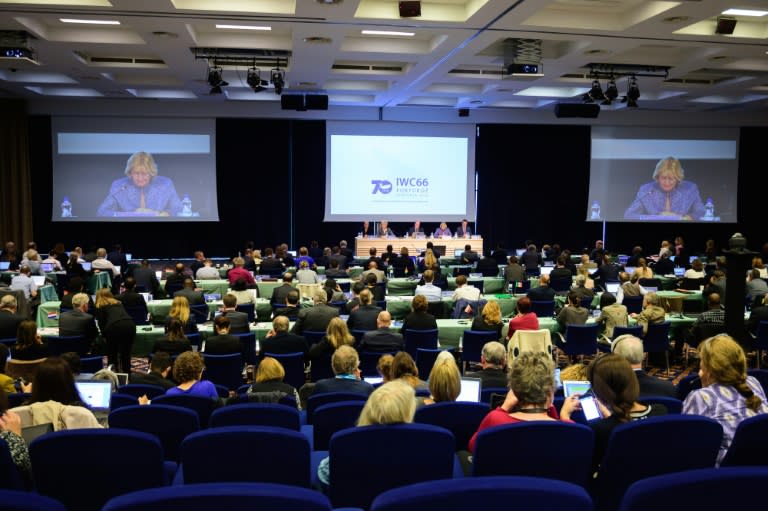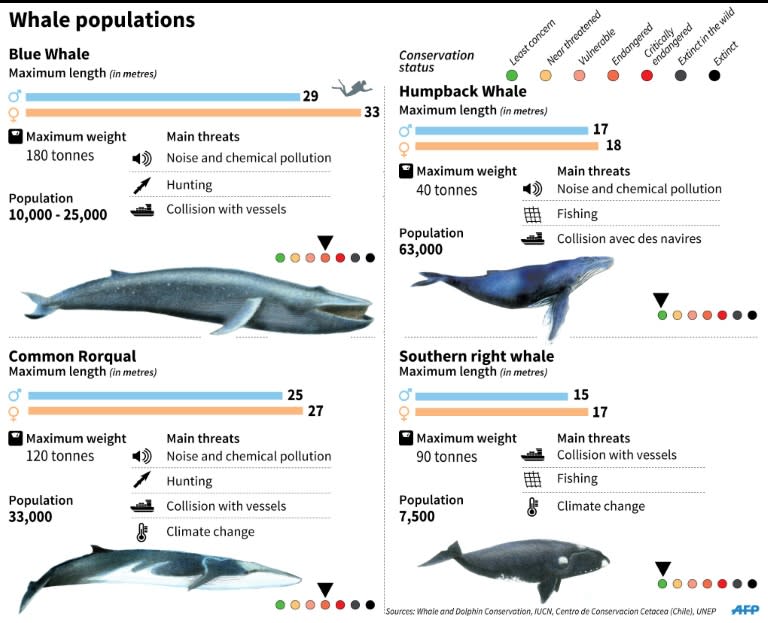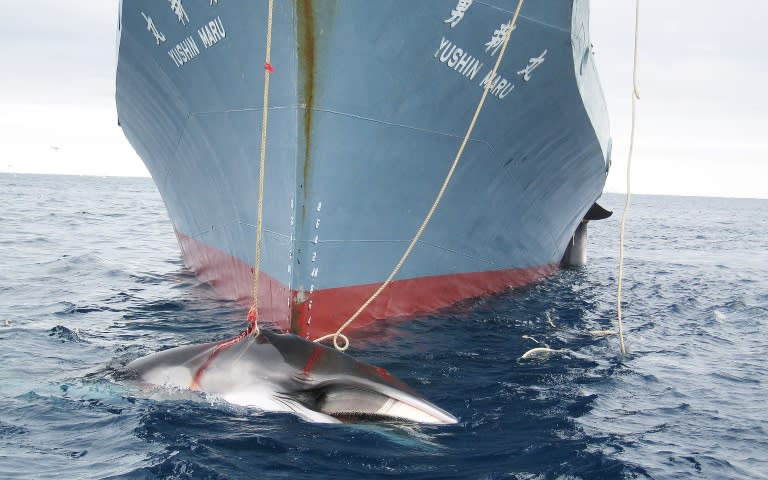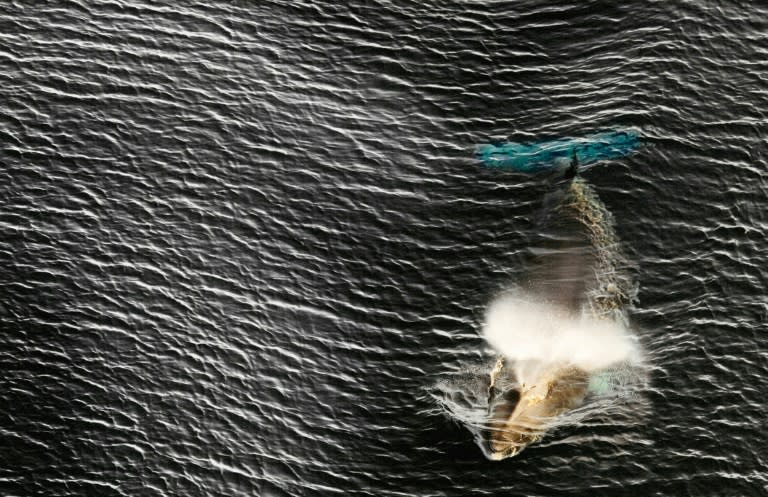Whaling: The hunters and the hunted
Thirty years into a moratorium on commercial whaling, hundreds of the marine mammals, some endangered, are killed every year -- some in open defiance of the ban, others in the name of scientific research. The moratorium, monitored by the International Whaling Commission (IWC) which closed its 66th meeting in Slovenia on Friday is credited with having saved tens, perhaps hundreds, of thousands of whales. It has allowed the recovery of many species hunted to near-extinction in the 20th century for their meat, and for blubber used in soap and fuel. How things stand now: The hunters Japan: Japan is the only country to hunt under an exemption to the moratorium which allows IWC member governments to issue special permits to kill whales for research. It has netted more than 15,000 whales since 1985, which critics say are for sushi rather than science -- about 500 whales per year. In 2014, the country was chastised by the International Court of Justice. The exemption stipulates the meat must be "processed" -- in Japan's case it lands up in supermarkets and restaurants. Japan has hunted whales for centuries and whale meat was a key source of protein in the tight years that followed World War II, but consumption has dramatically declined in recent decades, especially among younger generations. Norway: Norway is the world's biggest whale hunter today. It landed nearly 12,000 minkes between 1986 and 2014, according to the latest official IWC data. The biggest recorded annual haul was in 2014 with 736. The country hunts under a formal objection lodged against the IWC moratorium. Iceland: Similar to Norway, Iceland negotiated a "reservation" against the moratorium under which it continues hunting for whale meat, though on a much smaller scale. Icelandic hunters harpooned 906 fin and minke whales from 1986 to 2014. Few people eat whale meat in Norway and Iceland today, and observers say most of the haul is destined for Japan. Whale meat is also served to thrill-seeking tourists and some ends up being used as animal feed. On Thursday, the United States said continued whaling by the two Nordic countries "diminish the effectiveness" of the IWC. "We strongly urge Iceland and Norway to cease immediately all commercial whaling and international trade in whale products," said US IWC commissioner Russel Smith. Whaling countries which are not members of the IWC, such as Canada and Indonesia, are not bound by the moratorium. Aboriginal hunters: The indigenous peoples of Alaska, Chukotka in the Russian Far East, Greenland and St Vincent and The Grenadines receive catch limits from the IWC. Jointly, they took 355 whales in 2014 -- a total of 10,139 since the moratorium was introduced. The hunted Minke whales, mainly from the Antarctic Ocean but also the northeast Atlantic, are the most targeted species for commercial, scientific and aboriginal hunts by far -- more than 41,000 have been recorded killed in three decades. Minke whales grow up to about 10 metres (32 feet) in length, and weigh up to 10 tonnes. They are the most abundant of the baleen whales, which filter plankton and small fish from the ocean for food with special bristle-like structures in their mouths. The second-most targeted group, exclusively by aboriginal hunters, are grey (3,542) and bowhead (1,481) whales. Sei whales are the second-most sought-after category under Japan's scientific programme, with 1,249 killed in 30 years. Fast swimmers, they grow to about 16 metres long and weigh some 20 tonnes. Found in the north Atlantic, north Pacific and southern hemisphere, they are listed as endangered. Bryde's whales, found in the Pacific, Indian and Atlantic oceans, grow to about 14 metres in length. They are taken in about equal measure by commercial hunters and by Japan -- a total of 1,317 over the moratorium period. Found in oceans worldwide, fin whales are the second-largest species of whale, growing up to 24 metres long. Despite being listed as endangered, 551 have been killed by commercial hunters and 310 by Japan under the moratorium. Aboriginal hunters have landed 356. Sperm whales, which have a vast geographic spread, are listed under species "vulnerable" to extinction. The largest toothed whale, and one of the deepest diving, they grow to about 18 metres long. Commercial whalers have killed 388 and Japan 56 under the moratorium. (SOURCES: IWC, International Union for Conservation of Nature, WWF)





